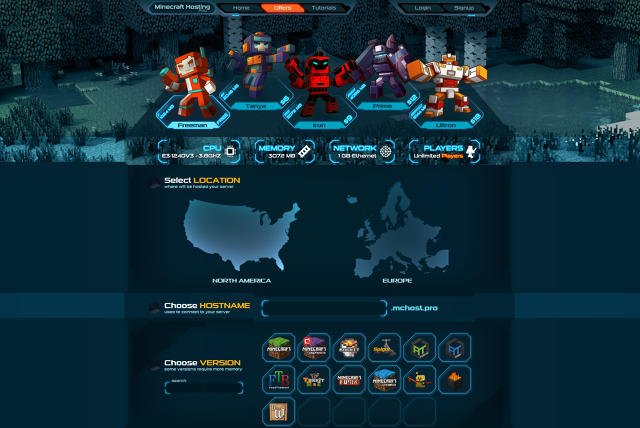After a series of missteps in video game development, this duo now hosts multi-player servers for the popular game Minecraft.
A two-person company from the small southern French town of Narbonne has unlocked a lucrative revenue stream from a global trend: Minecraft. After a series of missteps in video game development, Starlancer Studios, run by Jacques Vaquier and his business partner, Gregory Jung, now hosts multi-player servers for the immensely popular game.
“I’d spent a good amount of time playing video games. So, I was really motivated to develop video games myself,” Vaquier says, using the French word impassioné, or impassioned, to express his enthusiasm for gaming. Initially, hosting Minecraft servers was only a way to fund his video game development business.

Taking advantage of Minecraft’s worldwide success, Vaquier and Jung are expanding Starlancer Studios’ Minecraft operations into North America and the rest of Europe this month. They will launch their new English-language site to promote their Minecraft servers on both sides of the Atlantic, on top of their three-year-old site for the French market.
Minecraft was created by Stockholm-based Mojang, which is now part of Microsoft. At the time I wrote this, Mojang reports there were 19,405,002 paying PC and Mac customers, and the number keeps growing. Known as a “sandbox” video game, its threadbare rules let players wander through virtual realms. The only real imperative is that a new player must gather enough resources to build a shelter by nightfall.
Minecraft servers enable multiple players to play the game together, without requiring people to keep their machines on at all times, or at least whenever their friends want to continue playing. The business opportunity lies in renting server space out to groups of players. And Minecraft isn’t the only game that requires servers for more than one player to play against one another. Games like Call of Duty and Battlefield work under the same principle.
“We have 8,000 servers available to us in a data center in Paris,” Vaquier says. “The value is that they are always online, are reliable, and are stable.” He now has a new partnership with a data center in North America, to serve his new clients with the same dependability.
Minecraft’s Global Takeover
In 2008, Vaquier started developing browser-based video games with a team in Montpellier, France. There, he met Jung, and with their joint investment, they transformed the group’s project into a business. It eventually flopped.
Vaquier and Jung then struck out on their own, forming Starlancer Studios in 2012 and focusing on creating a more intricate browser video game. To raise funds for this effort, they hosted Minecraft servers. Vaquier says that was the same year in which the game “exploded.” When the money started rolling in, the duo decided to make Minecraft the business’s focus.

Given that Minecraft’s player numbers keep booming, very little may hinder Starlancer Studios’ growth—except for competition from other Minecraft servers. James Copeland, the founder of Canadian-based GGServers, says there are hundreds of thousands of companies offering server space for Minecraft players. Like Vaquier, Copeland is taking advantage of the game’s worldwide user base by renting out servers in eight locations around the world, with 10,000 to 12,000 virtual servers online at any given time.
Currently, Vaquier says, France is the third largest market for multiplayer Minecraft, after the U.S. and Germany. So entering the U.S. was a natural move for Vaquier’s growing company. But after an exhaustive market research study, he devised a careful initial strategy based on offering add-on applications for Minecraft and free server access.
“The U.S. and French markets are really different,” says Vaquier. “France is advanced in that it’s easier for players to find servers at no cost,” adding that running servers in Europe costs less than in the U.S. He’s decided to differentiate his business for the North American market by offering a “sizable amount” of free servers to players, giving them the opportunity to get used to other perks of the service.
According to Vaquier, there are two ways to make a Minecraft server business stand out:
Offer fun extras. In addition to server space, the team develops user interfaces and extra applications, called mods, to enhance the Minecraft-playing experience. Some popular mods let players build a complete Middle Earth or re-create Westeros from Game of Thrones. Vaquier and Jung have developed their own 3-D maps for various Minecraft worlds, as well as a VoIP application that allows players to communicate with other players in real time.
Make interfaces simple. “We make our user interfaces our number-one priority,” says Vaquier. “We want our users to be able to easily sign up for a server, automating as many steps as possible.” He mentions that many of his clients are children and teenagers, aged 8 to 16. They won’t take the time to configure IP addresses on their own.
Now 32, Vaquier says he’ll go back to developing his original video game concept, but there’s too much going on in the Minecraft world to divert resources away from the hosting business. For now, serving the game’s vast base of users is all the opportunity his company needs.